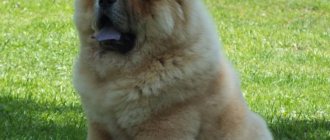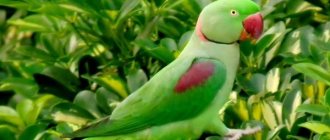When we talk about pets, we usually mean cats, dogs, and birds. But in recent years, more exotic options have become increasingly common - spiders, snails, reptiles, etc. Those who have visited warm southern countries were able to appreciate the charm of nimble domestic lizards, familiar to the tropics, and willingly purchase them in our colder regions.
Should you keep lizards at home?
Lizards as pets are still a less common and well-known option, so before getting one, it’s worth assessing its pros and cons for you. After all, these reptiles are also living creatures that will not survive without human care and outside the home.
There are even more options on the website: https://zeleniymir.org - these are our best friends!
By purchasing lizards, a person takes responsibility for their well-being, and it is worth assessing in advance the advantages and disadvantages of such pets.
Photos of pet lizards look very attractive, but are they right for you as pets?
bearded dragon
The bearded dragon is one of the friendliest, tame reptiles, but calling it completely easy to care for would be wrong. But if you spend a little more effort, you will get a non-aggressive pet that feels comfortable around a person. The main difference in the conditions of detention from the leopard gecko is the larger size of the terrarium. For an adult lizard, its length should be at least 90 cm.
The reptile is also highly dependent on receiving vitamin D3. Without it, calcium will be poorly absorbed and diseases may appear. A simple solution to the problem is to install an ultraviolet lamp and feed with a complex of vitamins and calcium.
It is also worth remembering that the temperature in a warm corner of such an animal should be quite high - up to 40 degrees. To do this, install incandescent lamps in the terrarium. A branch convenient for placing the lizard or a special shelf is placed under the place they illuminate. This will be convenient for your pet, and you can watch him throughout the day.
There will be no problems in choosing food. The cubs eat every day - small insects and chopped greens suit them. Adults feed every two days. Most insects can be used, from crickets and locusts to cockroaches. You can’t do without the plant component. For adult agamas, plant foods are the main part of the diet.
Pros of keeping lizards at home
A significant advantage when choosing lizards as a pet is the absence of wool, fluff, and feathers in the house. This means that there is no risk of allergic reactions among the owners or guests of the house.
Another plus is their constant presence in the terrarium. After all, this makes it easier to maintain order in the house and ensures that there is no risk for your pet of getting accidentally injured from getting into the wrong place.
Lizards are calm inhabitants of the house, not disturbing their owners with an unpleasant smell, loud noise, or pestering in search of affection or play.
There are no special problems in nutrition either; you can use ready-made food or feed it yourself, following the recommendations of specialists.
Watching these interesting reptiles helps relieve stress and brings pleasure to the owners.
Note!
- Indian snakes: sacred, poisonous, most common and dangerous types of Indian snakes and their names (130 photos)
Small snakes - an overview of popular and rare species, habitats, food and names of snakes (115 photos)
- Snake bites - the most dangerous and poisonous snakes and the consequences of their bite (110 photos and videos)
Corn snake
One of the most common species among beginners. It takes root well and is bred in captivity, produces offspring, and is easy to care for.
The snake is small in size - it is rarely more than one and a half meters long. An important feature is that the pet will feel good at different temperatures, and the humidity requirements are also low. This is important because new breeders often have difficulty creating a comfortable environment.
Young individuals can be kept in compact terrariums measuring 30*30*30 cm. Adults are kept in terrariums measuring 60*45*30 cm. It is important to consult with our specialists and choose a place of detention from which the reptile cannot escape. These snakes are famous for the fact that they can get out even from a locked terrarium if loopholes are left for them.
Content requirements include:
- Dividing the terrarium into a cold zone with a temperature of 21-24 degrees and a warm zone with warming up to 28-30 degrees.
- The right substrate. Snake Bedding primer is best. It does not generate dust, is soft, absorbs odors and retains heat. Snakes like to burrow into it.
- Calibrated nutrition. A regular mouse once a week will do. Drinking water must be present in the terrarium at all times.
Snakes feel good in the hands and quickly get used to their owners. This is a versatile option as a first reptile.
Cons of keeping lizards at home
In addition to the already mentioned cost of purchasing a terrarium and the necessary equipment, a lot of space is required to accommodate it.
It is necessary to study well how to keep a lizard at home, because unlike cats and dogs, their habits and needs are completely unfamiliar to us. Some require a special microclimate, others require special food, such as live crickets.
The need to be careful when caring for the terrarium and pets. Unlike cats and dogs, they do not become attached to their owner, no matter how long they live next to you, and can be aggressive.
Spotted leopard gecko
You can also choose a pet from spotted leopard geckos. This is a very popular lizard for breeding and does not require you to make a large investment when purchasing a terrarium. She will feel comfortable in a terrarium 45*45*30 cm.
To prevent the leopard gecko from getting sick and growing, it will be necessary to create two zones in the place where it is kept. The cold corner has a temperature of 24-27, the warm corner - 29-32 degrees.
There are a few simple content requirements:
- Organize the right substrate. Specialized sand or clay will do.
- Create shelters. It is best if they are in both areas of the terrarium.
- Prepare a place for molting. There must be a space in the container with slightly increased humidity, where the animal could shed quietly and not get hurt.
Lizards eat insects, so they can be fed crickets, cockroaches and locusts. You can also add mealworms and zoophobass, hawkmoth caterpillars, moths and others to your food.
The young are fed every day. Adults can be given insects three to four times a week. With each feeding you need to use a special calcium supplement, which is important for the growth of a healthy pet.
Types of domestic lizards
The world of these reptiles is so diverse that it is difficult to list all the names of domestic lizards. Therefore, we will name the main groups of lizards that can be kept at home.
Even within groups, different species may differ markedly in size and appearance, but still have some common characteristics, which we will name below.
Who should you choose as your first pet?
If you decide to get a reptile for the first time, you should consider a few simple recommendations:
- The corn snake is the most beginner-friendly snake.
- If you want a friendly and easy-going lizard, choose a bearded dragon.
- For small apartments where only a compact terrarium can be placed, the spotted leopard gecko is suitable.
- A beautiful and hardy lizard that is easier to care for than an agama and not so demanding in food is the blue-tongued skink.
We are ready to tell you in more detail about all types of pets in the store, as well as choose a terrarium, substrate, food and calcium supplements. We will develop the correct feeding schedule and answer all additional questions. You can learn more about options for beginners from our video.
Pet dragons
This is what iguanas could be called for their appearance and size. This is a relatively large species of reptile, some of them can reach a length of one and a half to two meters. They have a stern and slightly frightening appearance.
But at the same time, arboreal iguanas only eat plants, which makes their maintenance easier. Due to their origin from hot countries, tropical forests, they are quite demanding on temperature conditions.
Blue tongue skink
If the snake becomes a good first snake, then everyone who dreams of lizards should try to get skinks. This is a rather expensive pet, but when answering the question of which reptile is best to get, our consultants often suggest it.
A terrarium of 90*45*30 cm is suitable for keeping an adult animal.
In nature, skinks constantly dig in the ground, looking for food. Therefore, inside the terrarium there must be a suitable, safe substrate for this. You can use an inexpensive substrate made from a mixture of sphagnum and bark.
Like snakes, such lizards require the creation of cold and warm corners with temperatures of 25-26 and 35-40 degrees in the cold and warm zones, respectively. You need to monitor temperatures using a thermometer. This lizard is active during the day, so an ultraviolet lamp must be placed in the terrarium. You also need to organize constant access to drinking water - it is poured into a low drinking bowl and placed in a cold corner.
Skinks are omnivores. They eat insects and plant matter, so you don't have to deal with mice. They are also easy to tame and eat specialized Repashy food.
Standard feeding requirements:
- For young people: we feed every day.
- For adults: food can be given twice a week.
Skinks need to be fed a variety of foods. When feeding, food is sprinkled with a special complex of vitamins and calcium.
Skinks
This is the largest family of lizards, numbering more than 100 genera and 1.5 thousand species. Therefore, in this family you can find specimens of both bright colors and discreet modest ones.
There is the same spread in the size of different representatives of skinks: some barely reach 10 centimeters in length, others reach 70 centimeters.
They are all quite unpretentious, calm, and love privacy.
Chameleons
These lizards have a bright appearance that will make them a real decoration. In addition, they easily get used to people, are unpretentious, and rarely get sick, which makes them a popular choice for keeping in the home.
Geckos
These are small, but very active and funny lizards. Thanks to the special design of their legs, they can run on any surface - from floor to ceiling.
Another feature of geckos unique to lizards is the ability to communicate not only through tail flapping, but also through sounds.
Agamidae
In this family you can find arboreal lizards, terrestrial and aquatic species. They also differ in diet. Among agamas there are both carnivores and plant eaters.
Everyone will need to create appropriate conditions for which they are quite demanding.
Turtle
Different types of turtles are suitable for keeping at home. If you want a small pet, then you can buy a Central Asian steppe. The diameter of its shell is no more than 25 cm. Its difference is its sociability and lack of fear of humans. For keeping, choose a large terrarium, where there will be various obstacles and space for life. The diet includes greens, vegetables, all types of herbs.
You can also purchase a turtle for aquatic use. The best is freshwater red ear. The small size of the reptile allows it to be kept in a small terrarium with fresh water. Don't forget about land. Here she can warm up and relax. Feeding once every three days, for babies - every day. You need to feed in a separate place. The diet includes fruits and vegetables, greens.











